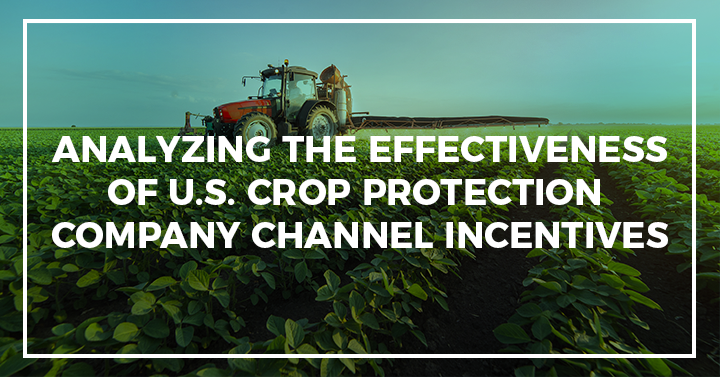Kline recently published its second report analyzing the 2020 crop protection programs offered to distributors, retail, and growers by the key research–based and generic crop protection suppliers. The EFFECTIVENESS OF U.S. CROP PROTECTION COMPANY CHANNEL INCENTIVES: AN OVERVIEW AND ANALYSIS report includes a spreadsheet layout of program summaries, organized by supplier, product type, and type of program, along with the estimated percent payout potential by product.
Suppliers included in the report are generic companies ADAMA, Albaugh, Arysta, and UPI, plus research-based BASF, Bayer, Corteva, FMC, Syngenta, and Valent. They represent an estimated 85% to 90%—or about $9.3 billion—of the total crop protection business in the United States. The suppliers were ranked on the management and effectiveness of their programs by distributors. In 2020, BASF, Bayer, and Corteva ranked the highest of the research–based suppliers, while UPI and Albaugh topped the rankings of generic companies.
The average supplier program incentives in 2020 for distributors, retailers, and growers are estimated at 33.8% for the research–based companies and 30.3% when adding mid–majors and generic volumes. These percentages represent the maximum payouts based on distributor invoice prices. Bayer and FMC had the highest payout potential in their programs, followed by Syngenta. The largest rebates appeared to be in the Midwest corn markets. Distributors, retailers, and grower programs represent 30.5%, 52.6%, and 16.9% of program dollars, respectively.
Research–based manufacturers use several types of program rewards or incentives to maintain or increase product sales. These include the traditional early order/stocking, prepay discounts; delivery allowances; inventory protection; brand loyalty; pair or match–up on multiple products; competitive allowances; goal achievement; corporate financing; and unpublished programs.
Rewards and incentives information in Kline’s report can be viewed by fungicide, herbicide, insecticide, PGR, nematicide, and seed treatment product. Private-label products are excluded from the report; distributor lists or estimated net pricing are provided in a summary of incentives by product.
A summary by supplier is provided, detailing the various types of programs offered and the value of each. Another key feature of this report is that it will include distributor managements’ likes, dislikes, and suggestions regarding the major programs, along with their perceptions of the programs’ relevance and value.

